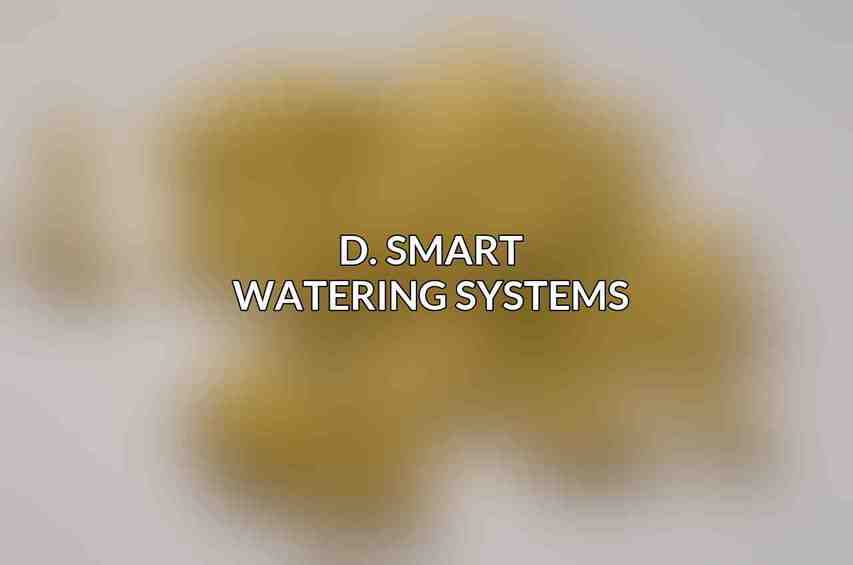Indoor gardening has been gaining popularity in recent years as people bring the beauty of nature into their homes. One of the key factors in successfully maintaining indoor plants is ensuring they receive the proper amount of water. Proper watering techniques are crucial for the health and longevity of indoor plants, as overwatering or underwatering can lead to various issues such as root rot or dehydration. Moreover, plants that are well-watered tend to be more vibrant and resilient, enhancing the aesthetics of indoor spaces.
Automated watering systems offer a convenient solution for busy plant enthusiasts who may not always have the time to manually water their plants. These systems can help maintain consistent moisture levels and reduce the risk of human error in watering practices. Utilizing automated watering systems can provide a hassle-free way to ensure plants receive the right amount of water at the right times, contributing to overall plant health and growth.
Types of Watering Systems for Indoor Gardens
A. Self-Watering Containers
Self-watering containers are a popular choice for indoor gardeners seeking a low-maintenance watering solution. These containers come in two main types: wick-based systems and reservoir-based systems.
Wick-based Systems:
– Description and Mechanism: These systems involve a wick that transfers water from the reservoir to the soil, providing moisture to the plant roots as needed.
– Advantages: Reduce the risk of overwatering, require less frequent watering, great for beginners.
– Popular Self-Watering Containers with Wick Systems:1. Lechuza Classico Self-Watering Planter2. Bloem Watering Globe
Reservoir-based Systems:
– Description and Mechanism: These systems have a reservoir that holds water, allowing the plant to absorb water through wicking or other mechanisms.
– Advantages: Provide a self-regulated water supply, reduce watering frequency, suitable for various plant sizes.
– Popular Self-Watering Containers with Reservoir Systems:1. Gardena NatureUp! Self-Watering Balcony Planter2. Elho Corsica Self-Watering Planter
B. Drip Irrigation Systems
Drip irrigation systems offer a precise and efficient way to water indoor plants. These systems consist of tubing, emitters, and a timer to deliver water directly to the plants’ root zones.
- Components and Setup: Tubing carries water to plant locations, emitters release water drops, and a timer controls watering intervals.
- Advantages: Water conservation, targeted watering, reduced risk of water wastage.
- Basic and Advanced Drip Irrigation Systems:
- Gardena Micro-Drip System
- Rain Bird DIY Drip Irrigation Kit
C. Timed Watering Systems
Timed watering systems operate based on preset schedules, ensuring plants receive a consistent supply of water without manual intervention.
- Description and How They Work: Timers regulate when and how long plants are watered.
- Advantages: Convenient, efficient water management, ideal for busy individuals.
- Types of Timed Watering Systems:
- Orbit Single-Dial Hose Timer
- Melnor 4-Zone Digital Watering Timer
D. Smart Watering Systems

Smart watering systems integrate technology to monitor soil moisture levels, weather forecasts, and plant water requirements to deliver precise and optimized watering.
- Features and Functionality: Wi-Fi connectivity, mobile app control, automated adjustments based on environmental conditions.
- Advantages: Customized watering schedules, water-saving capabilities, remote access.
- Popular Smart Watering Systems:
- BloomBox Smart Garden
- Click & Grow Smart Garden
Stay tuned for more information on choosing the right watering system and tips for effective watering in indoor gardens in the next sections.
Frequently Asked Questions
What are some effective watering systems for indoor gardens?
Some effective watering systems for indoor gardens include self-watering pots, drip irrigation systems, watering globes, and automated irrigation systems.
How often should I water my indoor plants?

The frequency of watering depends on factors like plant type, size of the pot, temperature, and humidity. In general, it’s recommended to check the soil moisture before watering.
What are some signs that my indoor plants are not getting enough water?
Some signs that your indoor plants are not getting enough water include wilting leaves, dry soil, yellowing leaves, and stunted growth. It’s important to monitor your plants regularly to ensure they are well-hydrated.
Can overwatering harm indoor plants?
Yes, overwatering can harm indoor plants by causing root rot, fungal diseases, yellowing leaves, and wilting. It’s important to strike a balance and not drown your plants with excessive water.
How can I ensure proper drainage in my indoor plant containers?
To ensure proper drainage in indoor plant containers, use pots with drainage holes, add a layer of rocks or pebbles at the bottom of the pot, and avoid using saucers to catch excess water. This will help prevent waterlogging and root rot.

